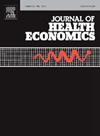减少成瘾性消费的危害:什么时候能改善健康,什么时候会适得其反?
IF 3.4
2区 经济学
Q1 ECONOMICS
引用次数: 0
摘要
一些减少危害的策略鼓励个人从有害的成瘾物品转为危害较小的成瘾物品;例子包括电子烟(可燃香烟的替代品)以及美沙酮和丁丙诺啡(阿片类药物的替代品)。事实证明,这些都是有争议的。支持者认为,与成瘾作斗争的人可以从中受益,因为他们可以改用危害较小的物质,但反对者认为,这可能会鼓励戒烟者开始使用减少危害的方法,甚至最终使用原来的成瘾物品。本文以成瘾理论为基础,对引入减低危害方法进行建模,并论证了双方都正确的条件。本文章由计算机程序翻译,如有差异,请以英文原文为准。
Harm reduction for addictive consumption: When does it improve health and when does it backfire?
Some harm reduction strategies encourage individuals to switch from a harmful addictive good to a less harmful addictive good; examples include e-cigarettes (substitutes for combustible cigarettes) and methadone and buprenorphine (substitutes for opioids). These have proven to be controversial. Advocates argue that people struggling with addiction benefit because they can switch to a less harmful substance, but opponents argue that this could encourage abstainers to begin using the harm-reduction method or even, eventually, the original addictive good. This paper builds on theories of addiction to model the introduction of a harm reduction method, and demonstrates the conditions under which each side is correct.
求助全文
通过发布文献求助,成功后即可免费获取论文全文。
去求助
来源期刊

Journal of Health Economics
医学-卫生保健
CiteScore
6.10
自引率
2.90%
发文量
96
审稿时长
49 days
期刊介绍:
This journal seeks articles related to the economics of health and medical care. Its scope will include the following topics:
Production and supply of health services;
Demand and utilization of health services;
Financing of health services;
Determinants of health, including investments in health and risky health behaviors;
Economic consequences of ill-health;
Behavioral models of demanders, suppliers and other health care agencies;
Evaluation of policy interventions that yield economic insights;
Efficiency and distributional aspects of health policy;
and such other topics as the Editors may deem appropriate.
 求助内容:
求助内容: 应助结果提醒方式:
应助结果提醒方式:


